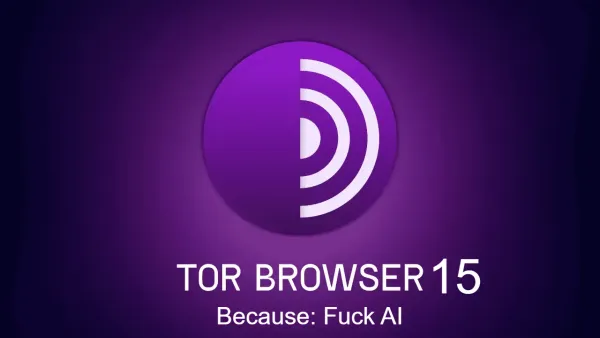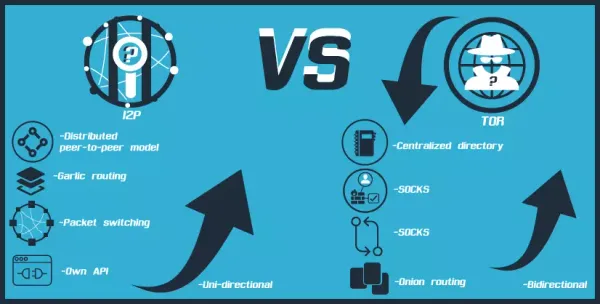BGPStream Hijack Detection: Automated Prefix Monitoring and Alerts
BGPStream enables automated BGP hijack detection through real-time routing analysis and CLI automation that identifies prefix hijacking and generates security alerts for network operators.

The internet's routing system lacks built-in authentication for origin and path, enabling hijacks. Not broken as in "needs a patch", broken as in BGP has no built-in origin or path authentication. Session protection like TCP-MD5/TCP-AO exists, but it doesn't validate route ownership or paths (RFC 6811, RFC 2385). Every router on the internet trusts what other routers tell it about which IP addresses they control. The protocol permits any AS to announce any prefix; filters and RPKI/ROV can block some invalids, but coverage is partial (Cloudflare).
BGPStream exists because this trust-based architecture gets exploited constantly. The framework monitors global routing announcements in real-time, watching for the exact moment when someone announces they own IP addresses that belong to someone else. When Pakistan accidentally took down YouTube globally in 2008, or when research documented repeated, long-horizon traffic misdirection events involving China Telecom, these weren't sophisticated hacks. They were BGP hijacks, and BGPStream provides the data stream to detect them as they happen.
BGP's Original Sin: Trust Without Verification
BGP (Border Gateway Protocol) is how internet routers share information about which IP addresses they can reach. Designed in 1989, BGP assumes everyone plays nice. The protocol permits any autonomous system (AS), basically any network with its own routing policy, to announce any IP prefix. Other networks simply accept and propagate these announcements, subject to filters and policy.
Think of BGP like a GPS system where anyone can claim they're the shortest route to Times Square. Your GPS doesn't verify the claim, it just redirects you through someone's garage in Newark because they said so. That garage owner now sees all your traffic, can copy it, modify it, or just drop it entirely.
The attack surface is massive. There are approximately 76,000 visible autonomous systems on the internet as of September 2025. The global routing table contains about 961,000 IPv4 prefixes (Potaroo). Each AS can potentially announce any prefix. The protocol has no built-in way to verify whether AS64512 actually owns 8.8.8.0/24 before accepting the announcement and sending Google's DNS traffic to Moscow.
Prefix hijacking works through specificity. If a victim advertises 8.8.0.0/23 (512 addresses), an attacker can advertise the more-specific 8.8.0.0/24 (256 addresses). Routers prefer more-specific announcements, subject to filters and policy (ThousandEyes). Traffic meant for the legitimate owner now flows through the attacker's infrastructure. They can monitor it, modify it, or black-hole it. The original owner might not even notice for hours or days.
AS path manipulation adds another attack vector. BGP uses AS_PATH length as one routing metric, shorter AS_PATH often wins after higher-priority policies like LOCAL_PREF. BGP lacks path validation by default (Cloudflare, IETF ASPA). Attackers forge AS paths to make their routes appear shorter, pulling traffic through their networks. They can also prepend fake autonomous systems to paths, making legitimate routes look longer and less attractive. The protocol has no mechanism to verify whether AS12345 actually connects to AS67890 or whether that path even exists.
Real Attacks, Real Damage
These aren't theoretical vulnerabilities. Major BGP hijacks happen regularly, affecting everything from cryptocurrency exchanges to government networks.
In April 2017, Rostelecom (AS12389) hijacked IP prefixes belonging to MasterCard, Visa, and dozens of major financial institutions. For several minutes, payment card traffic that should have stayed within the United States was routed through Russian infrastructure. The hijack affected 36 prefixes belonging to some of the most sensitive financial networks on the planet (Secureworks).

The 2018 Amazon Route 53 hijack was even more targeted. Attackers redirected traffic for MyEtherWallet.com through Russian networks for approximately two hours, stealing around $150,000 in cryptocurrency. Users were shown certificate warnings that many clicked through, not valid HTTPS certificates as initially reported. The attackers served a phishing site to steal credentials and cryptocurrency (Cloudflare, Internet Society).
Research documented repeated, long-horizon traffic misdirection events involving China Telecom (SecurityWeek). Unlike accidental leaks, these hijacks showed patterns of deliberate traffic interception. Western traffic between the U.S. and Europe was redirected through Chinese infrastructure. The hijacks were selective, only certain prefixes from specific organizations, maintained just long enough to be useful but not long enough to trigger widespread alerts.
State-level actors aren't the only threat. In 2014, hackers hijacked prefixes belonging to 19 ISPs to steal approximately $83,000 in Bitcoin. They redirected mining pool traffic through their servers for months, claiming other miners' rewards (The Hacker News). The attack lasted months before anyone noticed. Cryptocurrency operations remain prime targets because stolen funds can't be reversed and attribution is nearly impossible.
Even "accidents" cause massive damage. When Pakistan Telecom tried to block YouTube domestically in 2008, they accidentally created a leak that propagated globally via PCCW. YouTube became unreachable worldwide for two hours. One misconfigured router in Karachi took down one of the internet's largest sites (Internet Society).
BGPStream
BGPStream is a software framework that consumes BGP updates from hundreds of monitoring points worldwide, processing millions of routing changes daily. The system aggregates data from RouteViews, RIPE RIS, and other collection points that peer with thousands of networks. Detection logic, MOAS detection, deaggregation analysis, AS-path anomalies, along with alerting and hosting, are implemented by users or third-party services on top of BGPStream (BGPStream Docs).
The architecture is distributed by necessity. No single vantage point sees all routing changes. Collector visibility is uneven and biased toward North America and Europe (Wikipedia). BGPStream provides the data feeds; users must correlate updates from multiple locations to distinguish between legitimate routing changes and hijacks. A prefix announcement might look normal from one location but suspicious from another. Only by combining multiple perspectives can detection systems reliably identify anomalies.

Real-time processing is critical. Hijacks cause damage immediately, every second counts when payment card data or cryptocurrency is being stolen. BGPStream provides streaming access to BGP updates within seconds of collection. Users implement their own analytics that process these updates, maintain sliding windows of historical data to establish baselines, then flag deviations that match hijack patterns.
Common detection algorithms that users implement include MOAS (Multiple Origin AS) detection, which flags when multiple autonomous systems claim to originate the same prefix, a strong indicator of hijacking. Prefix deaggregation detection catches more-specific announcements that override legitimate routes. AS path analysis identifies impossible or suspicious paths that suggest manipulation. BGPStream provides the data; you write the detection logic.
Historical data provides context that real-time analysis alone can't offer. BGPStream maintains archives going back years, enabling forensic analysis of past incidents. Investigators can replay routing changes to understand attack progression, identify patterns across multiple hijacks, and develop attribution indicators. The same data trains machine learning models that improve detection accuracy over time.
Detection Without Prevention
BGPStream detects hijacks but can't prevent them. That's BGP's fundamental limitation, detection and prevention are completely separate problems. You can watch someone steal your routes in real-time but can't stop them unless downstream networks cooperate.
RPKI (Resource Public Key Infrastructure) provides cryptographic route origin validation, with approximately 54% global ROA coverage as of January 2025 (Potaroo). ROV blocks many origin hijacks where ROAs exist, but it doesn't stop leaks or forged paths (Cloudflare, NIST). RPKI does origin validation only; it doesn't address path manipulation or route leaks between networks with valid authorization.
BGPStream fills the gap between BGP's lack of authentication and RPKI's partial deployment. The framework provides data streams that enable rapid detection even if prevention isn't possible. Network operators can implement alerting systems, contact upstream providers, adjust routing policies, or deploy temporary filters to mitigate ongoing attacks.
Alert fatigue is a real problem. The internet experiences thousands of routing anomalies daily, most benign. Configuration errors, maintenance activities, and legitimate traffic engineering create noise that drowns out actual attacks. Users of BGPStream must implement their own threshold tuning and correlation analysis to reduce false positives, adjusting detection sensitivity for their specific environment.
Command-Line Control and Automation
BGPStream provides CLI tools that enable both interactive analysis and automated processing. The bgpreader tool queries historical data with flexible filtering options. The tool outputs machine-readable formats that integrate with existing security infrastructure.
Basic query for updates affecting a specific prefix:
bash
bgpreader -w 1633046400,1633132800 -f "type updates and prefix 8.8.8.0/24"This command searches for updates affecting Google's DNS prefix during the specified time window (epoch timestamps). Production deployments typically implement more sophisticated filters that correlate multiple signals.
Python integration enables custom detection logic (BGPStream API):
python
from _pybgpstream import BGPStream
s = BGPStream()
s.add_filter("prefix", "192.0.2.0/24")
s.add_filter("record-type", "updates")
s.start()
for rec in s.records():
for elem in rec:
# Your MOAS/deaggregation/AS-path checks here
# BGPStream provides data, you implement detection
passThe Python API supports complex analysis that CLI tools can't handle, statistical anomaly detection, machine learning integration, or correlation with threat intelligence feeds. Organizations implement detection logic specific to their infrastructure and threat model on top of the raw BGP data stream.
Integration with SIEM platforms happens through syslog, APIs, or direct database connections. BGPStream events appear alongside firewall logs, IDS alerts, and other security telemetry. This correlation reveals attacks that routing data alone might miss, like hijacks that coincide with DDoS attacks or credential theft attempts.
Deployment Reality Check
Running BGPStream at scale requires significant infrastructure. Processing global routing data means handling gigabytes of updates daily, maintaining historical archives, and running detection algorithms that consume substantial CPU and memory. Organizations must balance detection coverage against operational costs.
Data quality varies dramatically across collection points. Some monitors have rich peering relationships that provide comprehensive visibility. Others see limited routing tables that miss important updates. BGPStream can't detect hijacks that don't appear in monitored feeds, if no collection point sees the hijacked announcement, it remains invisible.
Geographic bias affects detection accuracy. Most BGP monitors cluster in North America and Europe, with sparse coverage in Africa, Latin America, and parts of Asia. Hijacks affecting these regions might go undetected or generate delayed alerts. Organizations operating in undermonitored regions need alternative detection strategies.
Legal complexities arise during incident response. BGP hijacks often cross international boundaries, involving networks in non-cooperative jurisdictions. Attribution requires careful analysis to distinguish malicious hijacks from configuration errors. Even with clear evidence, legal recourse remains limited when attackers operate from countries with weak cybercrime enforcement.
The Permanent Vulnerability
BGP hijacking isn't getting fixed. The protocol is too entrenched, the internet too large, and the economic incentives too misaligned. Every proposal for securing BGP faces the same problem: it only works if everyone deploys it, but early adopters bear all the costs while gaining minimal benefit.
BGPStream provides visibility into this authentication-free system. It can't fix BGP's trust problem, but it can show you the raw data stream of exactly when and how someone exploits it. For network operators, that's the difference between having the data to detect hijacks immediately versus discovering them weeks later in a forensics report.
CAIDA's BGPStream framework processes millions of routing updates through distributed collectors and provides programmatic access through CLI tools and APIs. Users implement their own detection algorithms, MOAS detection, prefix deaggregation analysis, AS-path validation, on top of the raw data stream. Organizations can deploy it on-premises, in the cloud, or use third-party services that handle the infrastructure complexity and provide detection logic.
But BGPStream is ultimately a band-aid on a gunshot wound. It provides the data to detect the bleeding but can't stop it. The internet's routing system remains vulnerable to any network that decides to lie about which addresses it controls. Every BGP announcement is an opportunity for hijacking. Every router is a potential accomplice. BGPStream just provides the data stream to watch it happen in real-time, detection and response are on you.
Until BGP gets replaced, which won't happen this decade, BGPStream and similar monitoring tools remain the primary source of routing telemetry for detecting hijacks. They can't prevent attacks, but they can provide data fast enough to limit damage. In a routing system built without authentication, that's the best we've got.




